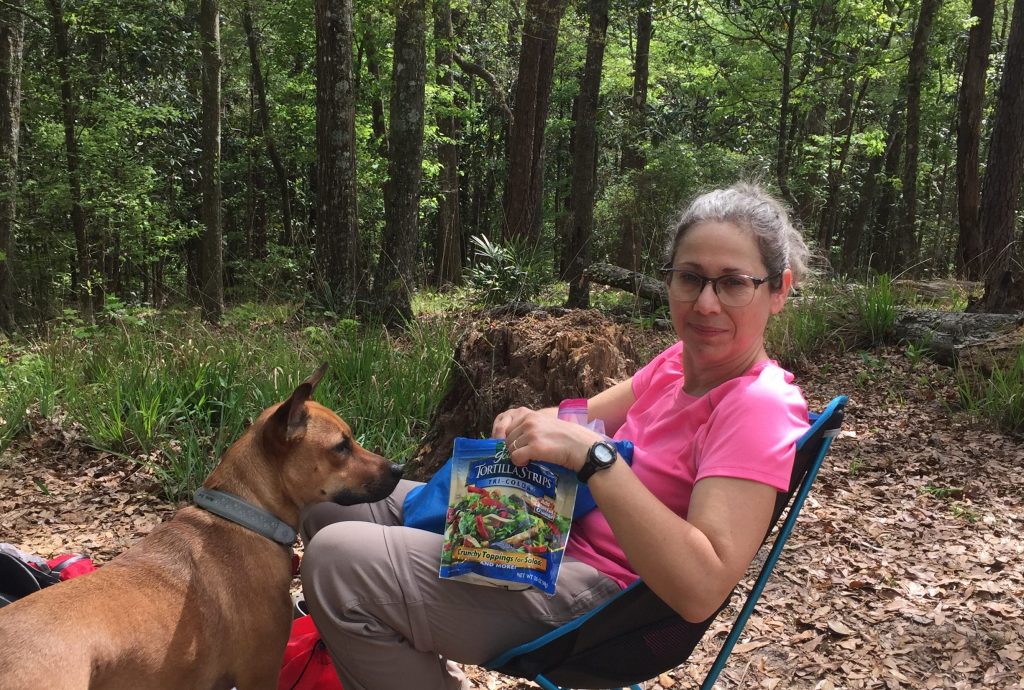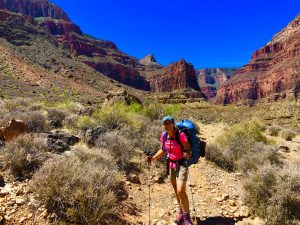
An overview of the basic considerations for backpacking water management, hydration management, and food planning regarding both meals and snacks.
Chris & Mac
We outventure to help you outventure!
Support Grey Otter Outventures!
Please help us continue to bring you great content:
Now that you have done your pre-planning and know the characteristics of the trails you will hike, let’s look at backpacking water management, hydration management, and food planning. Even on a simple backpack trip, you should have ample food and water. Remember, you will be away from these resources on the trail and there is always the possibility of getting lost, so plan your provisions accordingly.
-
Backpacking Water Management –
Backpacking water management is very important. Don’t assume you will find water on the trail. To manage your water effectively, you need to know the conditions on the trail and the locations where you can obtain water. For safety, this must be accomplished in your pre-planning.
Having determined water needs and refill locations, each hiker in your group should carry ample water for their needs and a little extra both for themselves and in case a hiking partner runs short. Remember that different trail conditions will affect your water consumption rate. In a cool, tree covered trail at low altitude, you may require only a small amount of water, while in high temperature, fully exposed desert hikes you may require up to a gallon of water per day per hiker. Understand also that even in cold climates, particularly at altitude, your body needs water to prevent dehydration. You may not feel thirsty, but make sure to regularly drink small quantities of water to stay hydrated. Knowing the conditions in which you will hike and your personal consumption rates will help you plan adequate water reserves.
-
Backpacking Hydration Management –
There is a condition called hyponatremia, commonly referred to as “water intoxication”. The condition is caused by drinking too much water, too fast, which throws off the balance of electrolytes in your body and can prove fatal. This condition can be a particular problem when hiking is very hot, arid areas such as the Grand Canyon. As such, it is prudent to carry a sport drink designed to replace electrolytes lost through sweat in addition to water. This can easily be accomplished by carrying a refillable bottle and powdered hydration packets in addition to salty snacks (which I discuss below). Hydration management is important whenever one is hiking, but the extra weight and exertion when backpacking makes hydration management really crucial.
-
Backpacking Food Planning –
When backpacking, food is not only for hunger, it is your fuel. Backpacking can burn a lot of calories, resulting in a loss of energy making that final legs of the hike a grind if you did not fuel properly. Additionally, food can help prevent conditions such as hyponatremia, discussed above, by replacing essential salts and electrolytes in your body. In camp and for lunch, make sure you have foods high in healthy calories and carbohydrates to fuel your body for your hikes. Plan your menu based on energy needs, consuming more calories and carbs for rigorous hiking days and dialing them back for easier days. During the hikes, it is a good idea to carry snacks such as basic trail mix with salty nuts and dried fruit for electrolytes and sugar. The meals you eat are unlikely to carry you through the miles of hiking, so targeted snacks will help your body maintain its energy and will replace salts and electrolytes lost through sweat.
The general rule of thumb for backpacking is to carry a pound of food per day, but you will want to adjust this based on your personal physical needs. Don’t lose sight of the fact that when backpacking, food is your fuel that gets you through the miles. Make sure the food is adequate, but not too much. Food is weight in a pack. Only take what you need. This same principle applies to treats and/or adult beverages that many like to carry. They may sound great for camp, but as the miles wear you may regret carrying the extra comfort foods/drinks. Learning to backpack is a bit of an evolution. Most backpackers start out carrying a lot of everything, only to wish they had not. As they develop experience, the goal is often to shed weight and some of those foods and drink we thought we couldn’t live without, we learn to live without.
Gear We Use for Backpacking
To see descriptions of the gear Chris & Mac use for backpacking, as well as links to manufacturers and retailers offering the gear for sale, please CLICK HERE.
SAFETY DISCLAIMER: The activities discussed in this website are outdoor activities and, as such, have inherent risks to which participants are exposed. It is not the intent of this website, nor is it possible due to the variability of weather, terrain, equipment, and experience, to detail all of those risks. The information contained in this site is informational, but not instructive nor exhaustive. It is the sole responsibility of the user to ensure he/she is in good health, fully prepared, and fully informed as to dangers before undertaking any of the activities discussed in this website and the user does so at his/her own risk. The user understands that by using this website he/she acknowledges and accepts all risks associated with use of information from this website and participation in any particular activity addressed herein. Please see “Terms of Use” for additional information.
Want to share this article with your friends? Click on the share button below:
Want more?
Get the latest outventure updates by following us on social media . . .



